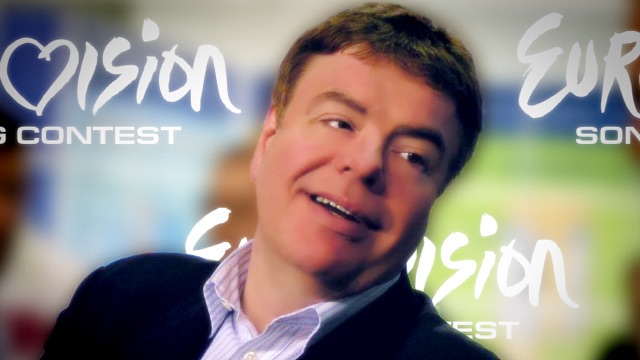Flags are such an integral part of the Eurovision Song Contest, not just as emblem of the nation performing to the flags waved and worn as insignia of support, but also as symbols of identity and allegiance. And that is complex.
I interviewed the former Eurovision Executive Supervisor, Svante Stockselius, for the UK fan club’s convention one year. He talked about how they’d deliberately dropped border outlines for countries in the graphics as for those with disputed territories, this fast became a headache. It seemed a wise move.

Svante Stockselius (photo: EBU / eurovision.tv)
Which Flags Are Good Flags?
Much was made of the “ban” of the Palestinian flag this year, many assuming it was a rule introduced because of the Gaza conflict, but actually, the policy has been flags of competing nations and pride/rainbow flags has been present for some years. That seems simple, right?
That argument easily falls apart when you consider, as in this BBC News report, the European Commission has questioned the EU flag being excluded. Arguably, it is a political symbol, though rightfully, it is interpreted as a symbol of unity and peace between member states, most of whom were represented on this year’s Eurovision stage. Had the Netherlands not been excluded, the EU flag would have featured prominently in their act. It’s a curious decision to permit it on stage as part of the show but prohibit it from being waved by someone in the audience.
So, competing nations only, that seems simple, right? But what happens if a performer has another national or regional identity within then? Would a Canadian flag be acceptable if Celine Dion were representing Switzerland now? What about a Welsh, Scottish, English, or Northern Irish flag for the UK act? What if their strong regional identity is from a separatist area or somewhere not fully internationally recognised?
What happens when an artist wishes to acknowledge their ethnic heritage through a similar visual emblem? Where does Eric Saade’s keffiyeh fit here? It’s not solely a symbol of Palestine and has cultural significance across a wider area of the Middle East. It’s a sign of heritage, not just political meaning—rather like Kenneth McKellar’s kilt or the many examples of traditional dress we’ve seen over the years.
Somewhere Over The Rainbow
Pride flags feel a part of Eurovision, symbolising how the Contest has actively embraced its popularity within the LGBTQ+ communities. Despite attempts by the political right to paint pride flags as political symbols, they’re far from it. Rather, Pride flags are a symbol of identity and inclusion, used to let a minority group with a history of being oppressed and excluded know they’re welcome.
Pride flags may be a victim of their diversity: so many versions have been adopted to reflect how diverse our queer communities are. Are there too many to brief security about? Should one rainbow flag suffice under this particular policy? Well, what about Nemo’s non-binary flag? That the winning song was so intrinsically linked with the singer’s gender identity whilst those carrying flags that signified that very thing had them confiscated at the door feels like a huge misstep. Charitably you can understand that with tensions riding so high at this year’s Contest a stricter approach was needed but it’s raising more questions than it solved.
The EBU’s statement says that whilst the policy is for flags of competing nations and the Pride/Rainbow flags only, the EU flag has not been explicitly banned in the ‘written policy’. This feels like they’re tying themselves in knots. It reads like “the policy is X, but the policy does not explicitly prevent deviation from the policy.” There is something there about having a cake (to bake) and eating it, too.
One Of Many Issues
There aren’t simple answers, and I’m not suggesting there are, and this is a relatively trivial issue compared to some of the more serious allegations that have emerged about conduct backstage. But after a torrid year for organisers, this is just another thing to add to the busy agenda of the next Reference Group.









